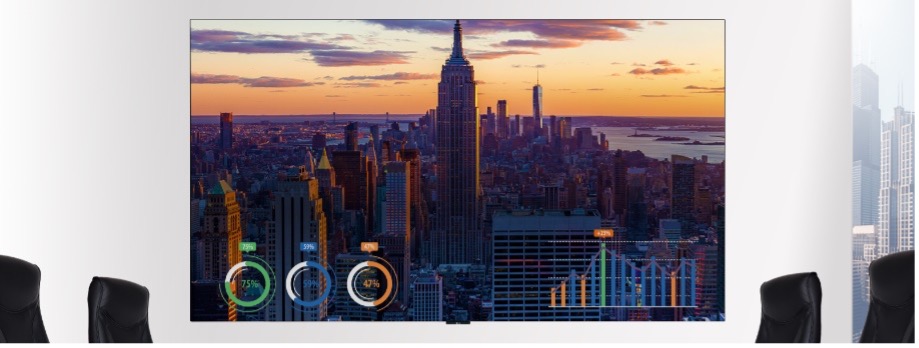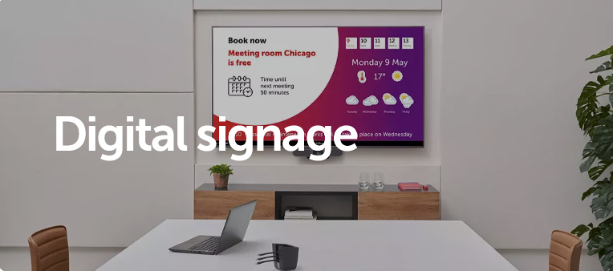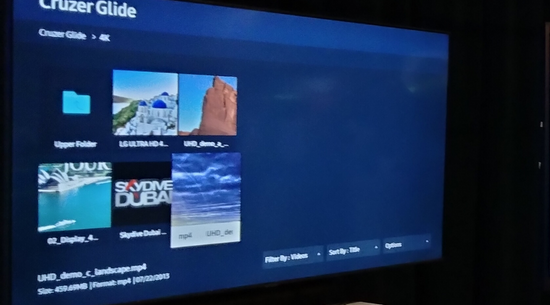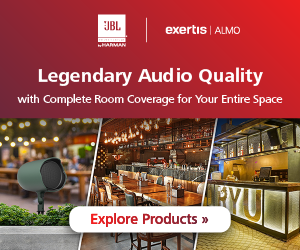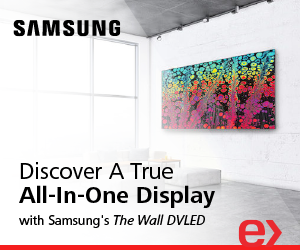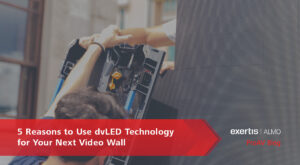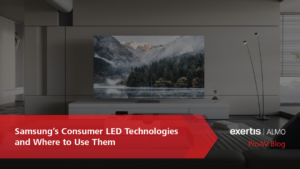5 Reasons to Use dvLED Technology for Your Next Video Wall
Here’s a detailed exploration of some the benefits that dvLED provides:
Seamless
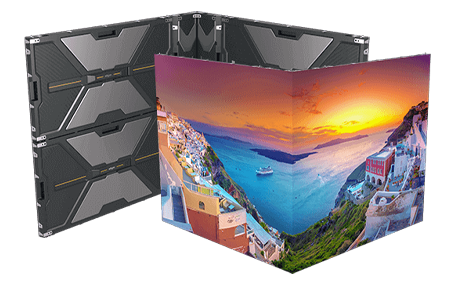 One of the most obvious benefits of dvLED video walls is their ability to create seamless images. Unlike LCD panels, which often have noticeable bezels that can disrupt the visual flow, dvLED panels can be tiled together without any seams, providing a more immersive viewing experience. This is not only important for retail applications but can be especially beneficial in the conference room where large video conferencing displays can bring a sense of togetherness for those not in the same room. For those of you that have been part of a video conference where the crosshairs of an LCD video appear on the participant’s face can appreciate the benefit of a seamless image.
One of the most obvious benefits of dvLED video walls is their ability to create seamless images. Unlike LCD panels, which often have noticeable bezels that can disrupt the visual flow, dvLED panels can be tiled together without any seams, providing a more immersive viewing experience. This is not only important for retail applications but can be especially beneficial in the conference room where large video conferencing displays can bring a sense of togetherness for those not in the same room. For those of you that have been part of a video conference where the crosshairs of an LCD video appear on the participant’s face can appreciate the benefit of a seamless image.
Superior Brightness and Color Accuracy
DvLED video walls are known for their exceptional brightness and color accuracy. This makes them ideal for environments with high ambient light, where LCD screens might appear washed out. The vibrant colors and high contrast ratios of dvLEDs ensure that images are vivid and engaging. At InfoComm, most of the dvLED displays had their brightness turned down so as to not blind those visiting their booth. As for me, I spent my day visiting many of the booths and getting a “neon tan”.
Flexibility in Design
 The modular nature of dvLED panels allows for more creative and custom-designed video walls. They can be built to any height or width and can even be configured into unique shapes, including curved or mosaic patterns. This flexibility is something that LCD video walls, with their set aspect ratios cannot match. While LCD display manufacturers fight for market share by introducing 21:9, 32:9 or even 58:9, dvLED allows the designer to choose the aspect ratio that fits not only the content, but the size of the room.
The modular nature of dvLED panels allows for more creative and custom-designed video walls. They can be built to any height or width and can even be configured into unique shapes, including curved or mosaic patterns. This flexibility is something that LCD video walls, with their set aspect ratios cannot match. While LCD display manufacturers fight for market share by introducing 21:9, 32:9 or even 58:9, dvLED allows the designer to choose the aspect ratio that fits not only the content, but the size of the room.
Longevity
DvLEDs offer a longer lifespan compared to LCD panels, often reaching 100,000 hours of use. Also, since they are made for 24/7 use, they are suitable for continuous operation in demanding environments without the risk of burn-in or image retention issues that can affect LCD displays. And because of their modular design, if you do have a failure, it can be a simple process to replace the failed item with one of the included spares.
Energy Efficiency
Contrary to popular belief, LED technology is generally more energy-efficient than LCD, which relies on backlighting. This efficiency translates into lower power consumption and reduced operational costs over the lifespan of the video wall. Also, because of the emissive technology, the brightness can typically be set at a much lower setting than a comparable LCD display.
BONUS – Better Refresh Rates:
DvLED video walls provide for higher refresh rates that that of most, if not all LCD displays. This means that the content remains clear and consistent even with fast moving action or flashing lights, whereas LCD panels might show pixelation or artifacts.
Conclusion
As you can see, dvLED video walls offer compelling advantages over traditional LCD video walls, ranging from seamless imagery to energy efficiency and longevity. These benefits make dvLED an increasingly popular choice for businesses and organizations looking to create impactful and long-lasting displays. For those considering an investment in video wall technology, dvLED presents a forward-thinking solution that can meet a wide range of display needs. For further information on dvLED technology, please contact me, or your Exertis Almo account manager to set up a call to discuss.

Todd Heberlein | CTS, DMC-D-4K, DSCE
Senior BDM – Technical Lead
Supported Manufacturers: Absen and Brightsign


 This is the most important part of the process and may require assistance from a third party – like your favorite
This is the most important part of the process and may require assistance from a third party – like your favorite  Assign someone (or ask for a volunteer) the role of Signage Evangelist. This person does not need to have any specific experience but should serve as the main contact so that requests are funneled through a single contact to make sure requests are properly directed. These are then directed to the partnership from Step 1.
Assign someone (or ask for a volunteer) the role of Signage Evangelist. This person does not need to have any specific experience but should serve as the main contact so that requests are funneled through a single contact to make sure requests are properly directed. These are then directed to the partnership from Step 1. Communication
Communication
